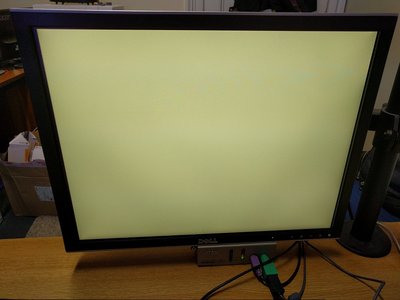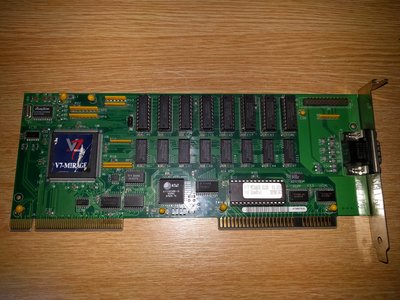First post, by Nipedley
Hi guys
I have two Spea V7 Mirage VLB cards (S3 805 chipset). One of them produces a lovely image, the other produces a slightly yellowish tinged image. The one that produces a lovely image has a terrible habit of crashing whenever the system is taxed, in either Windows 3.11 or Windows 95. The one that produces a yellowish tinge is perfectly stable. I have chips to upgrade one of the cards to 2MB, and the card crashes whether it's running 1MB or 2MB, makes no difference. The yellowish tinged card works just fine with 2MB. Of course, I know that it cannot be a driver conflict/etc. as the other card works perfectly.
I've reflowed the solder on both cards and cleaned both VLB edge connectors with isopropanol. Does anyone have any suggestions? I'm thinking the only thing I can try to fix the crashing card is to replace the yellow caps. I've attached images of the card & the screen that the card that crashes produces when it does so. I'm not sure why the other one has a yellowish tinge to the output, it's a slightly newer hardware revision (as printed on the PCB) but all of the components look identical.
Many thanks for any suggestions!


